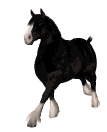As the years add up, the numbers of the Cheetah decreases. Most people dedicate their lives to such a beautiful creature. These people have set up an Island to meet their needs. It is an Island hidden on the map so people can't fly there and kill this animal. This island has over 500,000 square miles of plains, yellow grass, and dark green trees. They are used to warm weather, yet the weather sometimes is too much to bear. The good thing about this, is that there are no more lions, or Leopards.
facts
Territory for males: Males are often social and may group together for life, usually with their brothers in the same litter; although if a cub is the only male in the litter then two or three lone males may form a group, or a lone male may join an existing group. These groups are called coalitions. In one Serengeti, 41% of the adult males were solitary, 40% lived in pairs and 19% lived in trios.
A coalition is six times more likely to obtain an animal territory than a lone male, although studies have shown that coalitions keep their territories just as long as lone males— between four and four and a half years.
Males are territorial. Females' home ranges can be very large and a territory including several females' ranges is impossible to defend. Instead, males choose the points at which several of the females' home ranges overlap, creating a much smaller space, which can be properly defended against intruders while maximizing the chance of reproduction. Coalitions will try their best to maintain territories to find females with whom they will mate. The size of the territory also depends on the available resources; depending on the part of Africa, the size of a male's territory can vary greatly from 37 to 160 km2 (14 to 62 sq mi).
Males mark their territory by urinating on objects that stand out, such as trees, logs, or termite mounds. The whole coalition contributes to the scent. Males will attempt to kill any intruders, and fights result in serious injury or death. - But this is not always true, sometimes the male spares their life so they won't get hurt in a fight.
Territory for Females: Unlike males and other felines, females do not establish territories. Instead, the area they live in is termed a home range. These overlap with other females' home ranges, often those of their daughters, mothers, or sisters. Females always hunt alone, although cubs will accompany their mothers to learn to hunt once they reach the age of five to six weeks.
The size of a home range depends entirely on the availability of prey. Cheetahs in southern African woodlands have ranges as small as 34 km2 (13 sq mi), while in some parts of Namibia they can reach 1,500 km2 (580 sq mi)
All females want to mate, they only way to show that they have a territory is when they mark it to show they are in heat. To attract males to mate.
The cheetah cannot roar, but does have the following vocalizations:
Chirping: When a cheetah attempts to find another, or a mother tries to locate her cubs, it uses a high-pitched barking called chirping. The chirps made by a cheetah cub sound more like a bird chirping, and so are termed chirping, too.
Churring or stuttering: This vocalization is emitted by a cheetah during social meetings. A churr can be seen as a social invitation to other cheetahs, an expression of interest, uncertainty, or appeasement or during meetings with the opposite gender (although each gender churrs for different reasons).
Growling: This vocalization is often accompanied by hissing and spitting and is exhibited by the cheetah during annoyance, or when faced with danger.
Yowling: This is an escalated version of growling, usually displayed when danger worsens.
Purring: This is made when the cheetah is content, usually during pleasant social meetings (mostly between cubs and their mothers). A characteristic of purring is that it is realised on both egressive and ingressive airstream. A purring cheetah can be heard on Robert Eklund's Ingressive Speech website or on Robert Eklund's Wildlife page. A film clip of a purring cheetah can be seen on Robert Eklund's Purring site, as well as film clips of waveforms and spectrograms of cheetah and domestic cat (Felis catus) purring. Note that it is clearly visible that purring occurs on both inhalation (ingressive airstream) and exhalation (egressive airstream) and that the sound clearly emanates from the cheetah's muzzle.
Reproduction-
Females reach maturity in twenty to twenty-four months, and males around twelve months (although they do not usually mate until at least three years old), and mating occurs throughout the year. A study of cheetahs in the Serengeti showed females are sexually promiscuous and often have cubs by many different males.
Females give birth to up to nine cubs after a gestation period of ninety to ninety-eight days, although the average litter size is three to five. Cubs weigh from 150 to 300 g (5.3 to 11 oz) at birth. Unlike some other cats, the cheetah is born with its characteristic spots. Cubs are also born with a downy underlying fur on their necks, called a mantle, extending to mid-back. This gives them a mane or Mohawk-type appearance; this fur is shed as the cheetah grows older. It has been speculated this mane gives a cheetah cub the appearance of the honey badger (ratel), to scare away potential aggressors. Cubs leave their mother between thirteen and twenty months after birth. Life span is up to twelve years in the wild, but up to twenty years in captivity.
Unlike males, females are solitary and tend to avoid each other, though some mother/daughter pairs have been known to be formed for small periods of time. The cheetah has a unique, well-structured social order. Females live alone, except when they are raising cubs and they raise their cubs on their own. The first eighteen months of a cub's life are important; cubs must learn many lessons, because survival depends on knowing how to hunt wild prey species and avoid other predators. At eighteen months, the mother leaves the cubs, who then form a sibling ("sib") group that will stay together for another six months. At about two years, the female siblings leave the group, and the young males remain together for life.
Characteristics:
The cheetah's chest is deep and its waist is narrow. The coarse, short fur of the cheetah is tan with round black spots measuring from 2 to 3 cm (0.79 to 1.2 in) across, affording it some camouflage while hunting. There are no spots on its white underside, but the tail has spots, which merge to form four to six dark rings at the end. The tail usually ends in a bushy white tuft. The cheetah has a small head with high-set eyes. Black "tear marks" running from the corner of its eyes down the sides of the nose to its mouth keep sunlight out of its eyes and aid in hunting and seeing long distances. Although it can reach high speeds, its body cannot stand long distance running, because it is more suited to short bursts of speed.
The adult cheetah weighs from 35 to 72 kg (77 to 160 lb). Its total head-and-body length is from 110 to 150 cm (43 to 59 in), while the tail can measure 60 to 84 cm (24 to 33 in) in length. Cheetahs are 66 to 94 cm (26 to 37 in) tall at the shoulder. Males tend to be slightly larger than females and have slightly bigger heads, but there is not a great variation in cheetah sizes and it is difficult to tell males and females apart by appearance alone. Compared to a similarly sized leopard, the cheetah is generally shorter-bodied, but is longer tailed and taller (it averages about 90 cm (35 in) tall) and so it appears more streamlined.
Some cheetahs have a rare fur pattern mutation of larger, blotchy, merged spots. Known as "king cheetahs," they were once thought to constitute a separate subspecies but are in fact African cheetahs; their unusual fur pattern is the result of a single recessive gene. The "king cheetah" has only been seen in the wild a handful of times, but it has been bred in captivity.
The cheetah's paws have semi-retractable claws (known only in three other cat species: the fishing cat, the flat-headed cat and the Iriomote cat), offering extra grip in its high-speed pursuits. The ligament structure of the cheetah's claws is the same as those of other cats; it simply lacks the sheath of skin and fur present in other varieties, and therefore the claws are always visible, with the exception of the dewclaw. The dewclaw itself is much shorter and straighter than that of other cats.
Adaptations that enable the cheetah to run as fast as it does include large nostrils that allow for increased oxygen intake, and an enlarged heart and lungs that work together to circulate oxygen efficiently. During a typical chase, its respiratory rate increases from 60 to 150 breaths per minute. While running, in addition to having good traction due to its semi-retractable claws, the cheetah uses its tail as a rudder-like means of steering[citation needed] to allow it to make sharp turns, necessary to outflank prey animals that often make such turns to escape.
{ We will not be using the King Cheetah in this RP, since they are basically a PP animal. PM me if you want to know why we are not using them. }
I got all of my info from here.






























